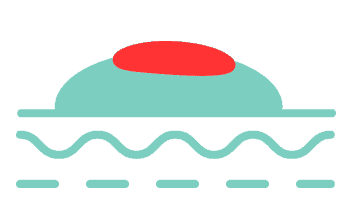What You Need to Know About Sarcoma Cancer

Sarcoma is a type of cancer that originates in the body’s connective tissues, such as muscles, bones, nerves, cartilage, blood vessels, and fat. It can occur in any part of the body. Sarcomas are relatively rare compared to other types of cancer, comprising lesser than 1 per cent of adult cancers and 20 per cent of childhood cancer.
They can be aggressive and difficult to treat, requiring specialised care from healthcare professionals experienced in managing these tumours. Early diagnosis and comprehensive treatment are crucial for improving outcomes for individuals diagnosed with sarcoma.
What are the types of sarcoma?
There are mainly 70 well known subtypes of sarcoma. They are broadly divided into two main types:
Soft tissue sarcomas: These cancers develop in soft tissues such as muscles, tendons, fat, blood vessels, nerves, and deep skin tissues. Examples include leiomyosarcoma (smooth muscle), liposarcoma (fat cells), and synovial sarcoma (joint tissues).
Bone sarcomas: These cancers originate in the bones and include osteosarcoma (bone cells), Ewing sarcoma (bone or soft tissue), and chondrosarcoma (cartilage).
What are the causes and risk factors of sarcoma?
There are very few known risk factors for sarcomas and patients do not always present with them. However, some causes and risk factors may include:
Genetic factors: Some sarcomas are linked to genetic conditions such as Li-Fraumeni syndrome, neurofibromatosis type 1, and familial adenomatous polyposis, which predispose individuals to develop certain types of sarcoma.
Radiation exposure: Previous exposure to ionising radiation, such as during cancer treatment or nuclear accidents, increases the risk of developing sarcoma later in life.
Certain inherited conditions: Inherited genetic mutations, such as mutations in the RB1 gene, which is associated with retinoblastoma, can increase the risk of bone sarcomas like osteosarcoma.
Chemical exposure: Some chemicals and environmental toxins, such as vinyl chloride used in plastics manufacture, have been associated with an increased risk of developing certain types of sarcoma.
Age and gender: Sarcomas can occur at any age, but certain types are more common in specific age groups. For example, osteosarcoma and Ewing sarcoma occur in children and young adults, while other types may be more common in older adults. Some types of sarcoma also show slight gender predilections.
Injury and chronic inflammation: Although less common, some sarcomas may develop at sites of previous injury, chronic inflammation, or scar tissue.
What are the signs and symptoms of sarcoma?
The signs and symptoms of sarcoma usually depend on its type and site of occurrence.
Soft tissue sarcoma
- Black stool
- Blood in vomit or stool
- Skin lesions
- Swelling
- Lumps and bumps; usually painless, are common early signs of sarcoma. These masses tend to grow and may reach sizes as large as 20cm or more
Bone sarcoma
- Bone swelling
- Fractures after minimal trauma
- Restricted mobility
- Occurrence of a lump with pain and swelling in the later stages
- Persistent pain in bones, especially pain that occurs at rest and at night while sleeping
- Sensation of numbness, tingling, or weakness due to pressure on nerves in the case of spine cancer



If you experience any lump or symptom of sarcoma, get tested early as a precautionary measure.
How is sarcoma treated?
The treatment for sarcoma depends on several factors, including the type of sarcoma, its location, size, stage, and the patient’s overall health. Here are the main treatment options for sarcoma:

Surgery: Surgery is often the primary treatment for sarcoma, aiming to remove the tumour and a margin of healthy tissue around it to reduce the risk of recurrence. In some cases, surgery may involve limb-sparing techniques to preserve function and appearance.
Radiation therapy: Radiation therapy uses high-energy beams to target and kill cancer cells. It may be used before surgery to shrink the tumour, after surgery to kill remaining cancer cells, or as a palliative treatment to relieve symptoms and shrink the tumours in advanced cases.
Chemotherapy: Chemotherapy uses drugs to kill cancer cells or stop their growth. It is often used in combination with surgery and / or radiation therapy, particularly for certain types of sarcomas that are sensitive to chemotherapy.
Immunotherapy: Immunotherapy drugs help the immune system recognise and attack cancer cells. While not yet widely used in sarcoma treatment, ongoing research is exploring their potential in certain subtypes of sarcoma.
If you or a family member is experiencing similar signs of sarcoma, speak with your oncologist for advice on the symptoms, diagnosis, and treatments. Early intervention is crucial in combatting sarcoma.



